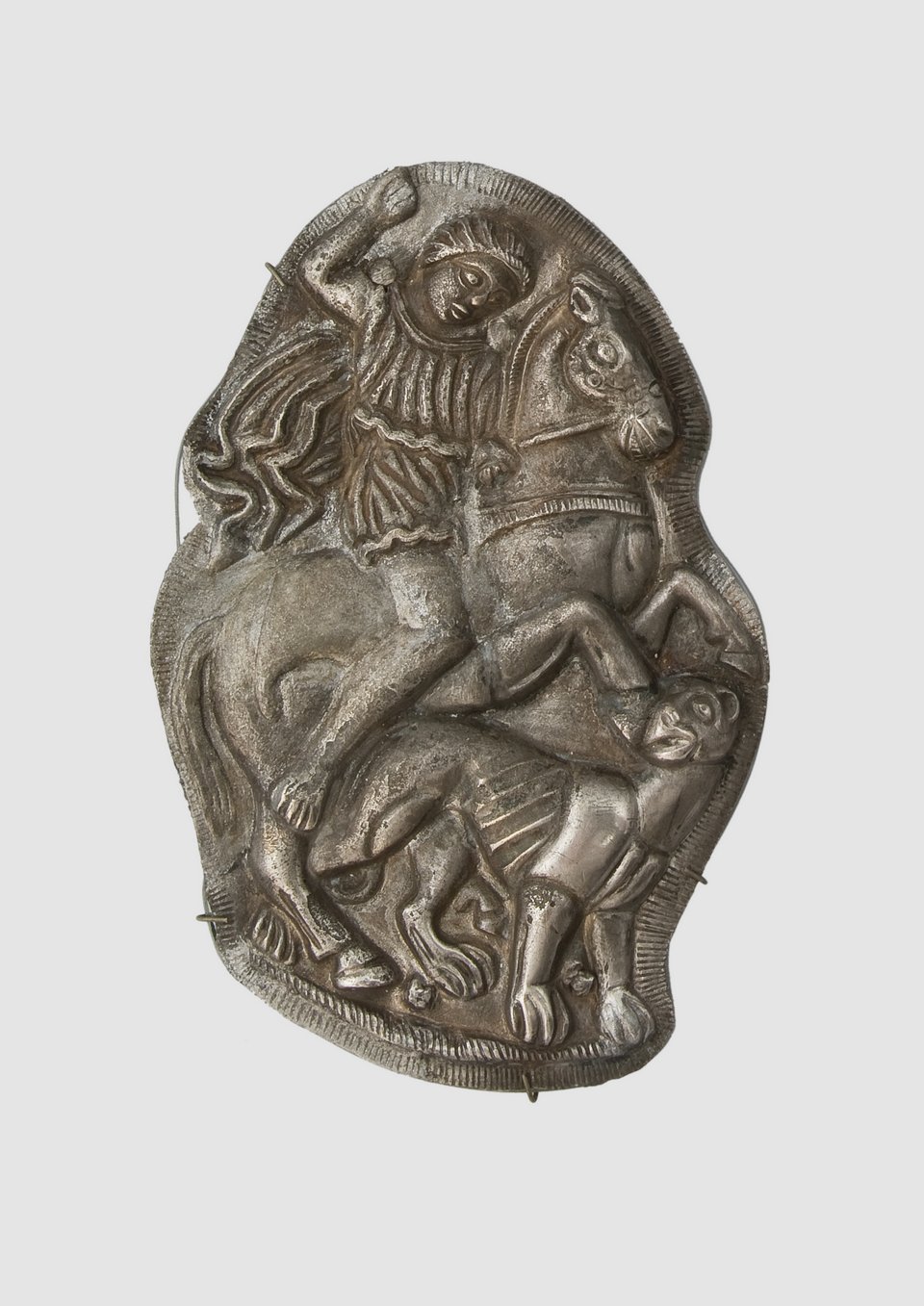Cheek piece is a decoration of a horse's bridle, which depicts the so-called "Thracian hero" – a rider and a lion under the horse's legs. Different variations of this image are quite common on the reliefs of the Hellenistic and Roman periods in the Balkans – mainly in Thrace, Macedonia, Thessaly and Moesia – from about the 4th century BCE, but the cult reached its most widespread in the 2nd and 3rd centuries CE. He is often mentioned with the epithets sōtēr ("savior") and iatros ("healer"). Little is known about the cult itself, which was most likely a combination of Greek and Thracian beliefs. In its heyday, it was associated with the idea of life after death and healing. In the first half of the 4th century CE, the cult of the Thracian horseman was transformed into the veneration of St. George, and the iconography characteristic of him continued to be used for the Serpent Killer.
14 burials of horses that accompanied the Scythian rulers to the underworld were discovered in the Ohuz mound. The wife or daughter of the Scythian ruler was buried in the northern grave of the barrow, so the finds were dominated by small gold ornaments and plate-appliques of clothing – about 6,000 items in total. At the entrance there are the skeletons of three horses in silver bridles of the "Thracian type". Similar products became widely distributed in the Northern Black Sea region in the 4th century BCE thanks to connections with Thrace.
en





